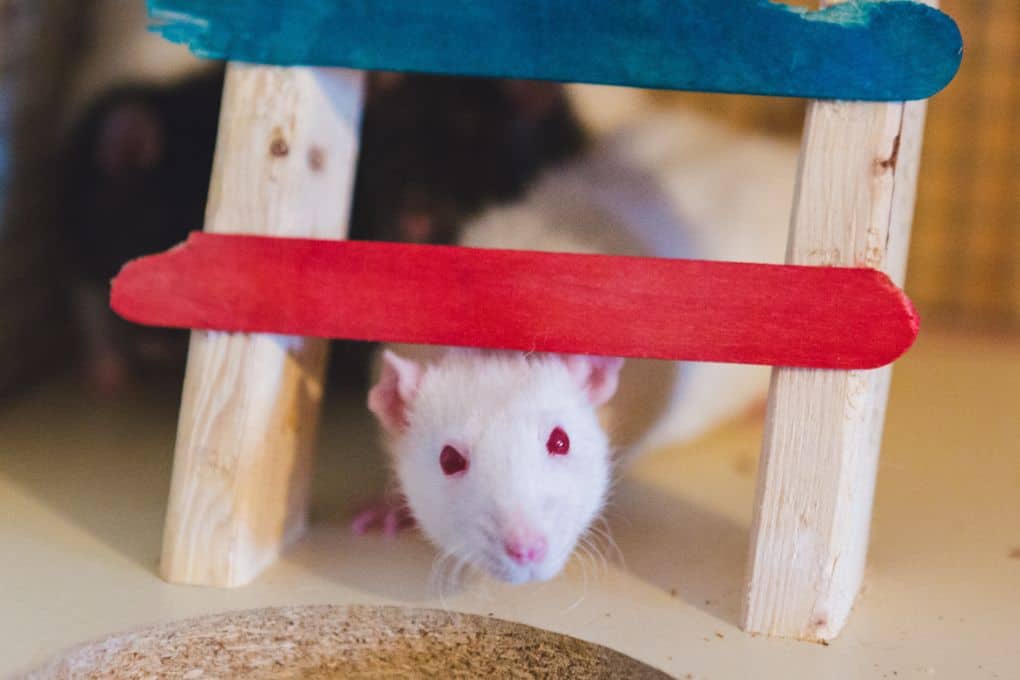Rats are known for their agility and their ability to climb almost any surface. They have been observed climbing walls, trees, and even pipes. They possess unique physical features and adaptations that allow them to scale surfaces with ease. In this blog post, we will explore the different aspects of a rat’s climbing ability, the surfaces and materials they can climb, and the reasons behind their climbing behavior.

Overview of Rats Climbing Ability
Rats are natural climbers and are able to climb vertical surfaces, such as walls, as well as horizontal surfaces, such as pipes and cables. They have a unique set of physical features and adaptations that enable them to climb with ease.
Physical Features That Aid Rats in Climbing
Rats have sharp claws that they use to grip onto surfaces. These claws are non-retractable but quite powerful and sharp for their size.
Their tails are also very important for balance and stability while climbing. They use their tails to counterbalance their weight and make sharp turns while climbing.
Rats also have strong hind legs which they use to propel themselves upwards. Their hind legs are much stronger than their front legs, which are primarily used for balance and support.
Adaptations That Enable Rats to Scale Surfaces
Rats have a unique adaptation in their feet, which helps them climb smooth surfaces. They have specialized pads on their feet called that provide extra grip. These pads are made up of tiny hairs that create a suction-like effect, allowing rats to cling to surfaces.
They also have a highly flexible spine which enables them to contort their bodies and fit into tight spaces. This helps them climb through small crevices and gaps.
What Surfaces Can Rats Climb?
Rats are able to climb a wide variety of surfaces, both vertical and horizontal. Here are some examples:
Vertical Surfaces Rats Can Climb
- Walls
- Fences
- Trees
- Telephone poles
- Brick and concrete surfaces
Horizontal Surfaces Rats Can Climb
- Pipes
- Cables
- Wires
- Tree branches
- Clotheslines
Challenges Rats Face When Scaling Certain Surfaces
While rats are skilled climbers, there are some surfaces that pose challenges. For example, smooth surfaces that are completely vertical can be difficult for rats to climb, especially if they are dry and smooth. In addition, surfaces that are covered in oil, grease, or other substances can be slippery and difficult for rats to grip onto.
Glass, for instance, is something that rats are unable to climb.
What Materials Can Rats Climb?
Rats are able to climb a variety of materials, but some are easier to climb than others.
Common Materials Rats Can Climb
- Wood
- Concrete
- Brick
- Metal
- Plastic
Materials That May Be Difficult for Rats to Climb
- Glass
- Tile
- Marble
- Smooth metal surfaces
Why Do Rats Climb?
Rats climb for a variety of reasons, both natural and situational.
Natural Behaviors That Encourage Rats to Climb
Rats are naturally curious animals and are always on the lookout for new food sources and shelter. They climb to explore their surroundings and to find new places to live and breed. In the wild, rats often climb trees to escape predators or to find food.
Situations That May Prompt Rats to Climb
In urban areas, rats often climb buildings and other structures in search of food and shelter. They may climb into attics or crawl spaces to nest, or they may climb up pipes to access a food source, such as a dumpster.
Conclusion
In conclusion, rats are highly skilled climbers with unique physical features and adaptations that enable them to scale a variety of surfaces and materials. While they can pose a challenge for property owners, understanding their climbing ability can help in developing effective pest control and prevention strategies.
- How Long Do American Eskimo Dogs Live? Important Factors and Care Tips - September 29, 2023
- Do American Bulldogs Need Grooming? Essential Tips and Care Guidelines - September 29, 2023
- Do Bengal Cats Enjoy Playing? Essential Tips for Keeping Them Active - September 29, 2023